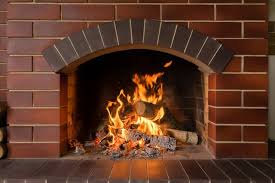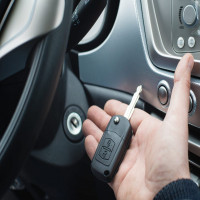How to Maintain a Safe and Clean Chimney: Tips from Experts

Strong 8k brings an ultra-HD IPTV experience to your living room and your pocket.
A clean and well-maintained chimney is essential for the safety and efficiency of your home’s heating system, especially during colder months. A buildup of soot, creosote, and other debris in the chimney can lead to dangerous chimney fires, poor ventilation, and even carbon monoxide poisoning. Regular maintenance is key to preventing these hazards. As a homeowner, understanding how to care for your chimney properly can save you from costly repairs, dangerous situations, and health risks.
In this blog, we will offer expert advice on how to maintain a safe and clean chimney. Whether you're considering professional chimney sweep in St. Louis services or handling some tasks on your own, these tips will help ensure your chimney remains in top condition throughout the year.
1. Why Chimney Maintenance is Important
Before diving into the steps of maintaining a clean and safe chimney, it’s important to understand why regular chimney care is crucial:
Prevent Fires: Creosote is a highly flammable substance that builds up inside your chimney when wood burns. If not cleaned regularly, it can ignite, causing dangerous chimney fires.
Improve Efficiency: A clean chimney ensures better airflow, which leads to more efficient heating in your home. A clogged or dirty chimney can cause smoke to back up into your home, creating an unpleasant and potentially hazardous environment.
Protect Your Home: A well-maintained chimney prevents water damage to both the chimney structure and your roof. Leaky chimneys can cause structural issues, rot, and mold.
Ensure Safety: A properly functioning chimney removes harmful gases like carbon monoxide from your home. Obstructions or damage to the chimney can lead to dangerous leaks.
With these risks in mind, here are expert tips to maintain your chimney's cleanliness and safety.
2. Schedule Regular Chimney Sweeping
The most effective way to maintain a clean and safe chimney is through regular sweeping. Experts recommend scheduling a professional chimney sweep in St. Louis at least once a year, even if you don’t use your fireplace frequently. During a chimney sweeping, a professional will thoroughly clean your chimney of soot, ash, and creosote buildup.
When to Call a Chimney Sweep
While an annual cleaning is standard, there are specific signs that indicate you should call a chimney sweep sooner:
Creosote buildup: If there is a noticeable buildup of creosote (the black, tar-like substance), your chimney should be cleaned immediately. A layer of creosote thicker than 1/8 inch is considered a fire hazard.
Smoke in the home: If you notice smoke backing up into your living room or fireplace, it could mean there is an obstruction in your chimney.
Burning odors: A persistent burning smell when the fireplace is not in use can be a sign of buildup or debris inside the chimney.
Hiring a certified chimney sweep in St. Louis ensures that the job is done safely and effectively, reducing the risk of a chimney fire or other dangerous issues.
3. Inspect the Chimney Annually
In addition to professional sweeping, annual inspections are essential for maintaining your chimney's integrity. A chimney inspection should be part of your regular home maintenance schedule. A certified chimney professional will inspect the chimney for:
Cracks or gaps: Cracks in the chimney masonry or flue can allow gases or smoke to escape into the home. These gaps also increase the risk of chimney fires.
Blockages: Twigs, leaves, nests, and even animal debris can block your chimney. A blocked chimney can cause a dangerous backup of smoke or gases.
Damaged chimney liner: The chimney liner is crucial for protecting your home from heat and gases. If the liner is cracked or deteriorated, it's important to replace it to prevent leaks.
Water damage: Water intrusion can erode your chimney over time, causing rust, cracks, and structural damage. An inspection can identify signs of leaks or moisture buildup.
Scheduling a thorough annual inspection by an expert chimney sweep in St. Louis will help catch any issues early, saving you from costly repairs down the line.
4. Use the Right Wood
The type of wood you burn in your fireplace plays a role in how clean your chimney stays. Burning wood that is not properly seasoned (dried for at least six months) can lead to excessive creosote buildup in the chimney. Fresh, green wood or wood with high moisture content produces more smoke and creosote, which increases the risk of chimney fires.
Tips for Choosing Firewood:
Season your wood: Always burn seasoned hardwoods such as oak, maple, or hickory, as they produce less smoke and creosote. Avoid burning pine, fir, or cedar, which tend to produce more creosote.
Dry firewood: Make sure the wood you use is dry and split. Wet or damp wood will burn inefficiently and produce more smoke and soot.
Store wood properly: Store firewood off the ground in a dry area to ensure it remains dry and properly seasoned.
Proper wood selection and burning practices can help keep your chimney clean and safe.
5. Install a Chimney Cap
A chimney cap is a protective cover that sits on top of your chimney flue. It serves as an essential barrier against rain, snow, debris, and animals entering the chimney. Without a chimney cap, your chimney is at risk of clogging with leaves, branches, and animal nests, which could lead to blockages or water damage.
Benefits of a Chimney Cap:
Prevents debris and animals: A chimney cap keeps leaves, twigs, and other debris out of the chimney, reducing the risk of blockages. It also prevents birds and animals from nesting inside.
Protects against water damage: The cap prevents rain and snow from entering the chimney, which can cause rust, corrosion, and other water-related damage.
Increases safety: A properly fitted cap prevents sparks or embers from escaping the chimney and potentially igniting nearby objects or the roof.
Consider installing a chimney cap as part of your overall chimney maintenance plan to protect your home from the elements.
6. Check for Blockages
Blockages inside your chimney can be dangerous, leading to poor ventilation, smoke buildup, and even carbon monoxide poisoning. Common blockages include nests, debris, soot, and creosote buildup. To prevent blockages, make sure your chimney is properly cleaned and inspected regularly.
How to Detect a Blockage:
Smoke backdraft: If you notice smoke coming back into your living room or fireplace, it’s a sign that the chimney may be blocked.
Unpleasant odors: If you detect a musty or burning smell when the fireplace isn’t in use, there could be a blockage in the chimney.
If you suspect a blockage, it’s essential to call a professional chimney sweep in St. Louis to safely remove it and restore proper airflow.
7. Ensure Proper Ventilation
Proper ventilation is essential for a safe chimney. If the chimney isn’t venting correctly, it can cause dangerous gases, such as carbon monoxide, to back up into your home. Always make sure your chimney has adequate airflow to ensure the safe expulsion of smoke and gases.
Tips for Ensuring Proper Ventilation:
Check chimney height: The height of your chimney affects its ability to vent smoke and gases. Make sure your chimney is tall enough to create proper draft and airflow.
Inspect the damper: The damper controls airflow in the chimney. Make sure it opens and closes properly to allow for effective ventilation during a fire.
Regularly checking and maintaining ventilation ensures that your chimney is working as it should and that dangerous gases are properly expelled from your home.
8. Seal Leaks and Cracks Promptly
Leaks and cracks in your chimney can compromise its integrity and allow smoke, gas, and water to leak into your home. Small cracks or leaks should be sealed immediately to prevent more serious damage and costly repairs.
How to Fix Leaks and Cracks:
Masonry repair: For small cracks in the chimney masonry, you can apply chimney repair mortar to seal them. For larger cracks or structural issues, you may need professional repairs.
Chimney liner repair: If your chimney liner is cracked, it may need to be replaced to prevent dangerous gases from escaping into your home.
Prompt repairs can prevent water damage and costly structural issues down the line.
9. Conclusion
Maintaining a clean and safe chimney is essential for the safety, efficiency, and longevity of your home’s heating system. Regular chimney sweeping, inspections, and proper maintenance practices can prevent chimney fires, water damage, and costly repairs. By following expert advice, including using the right wood, installing a chimney cap, and scheduling regular professional service, you can keep your chimney in top condition and ensure the safety of your home and family. If you're in need of chimney sweep in St. Louis, make sure to hire a professional who can keep your chimney clean, safe, and functioning efficiently for years to come.
Note: IndiBlogHub features both user-submitted and editorial content. We do not verify third-party contributions. Read our Disclaimer and Privacy Policyfor details.


